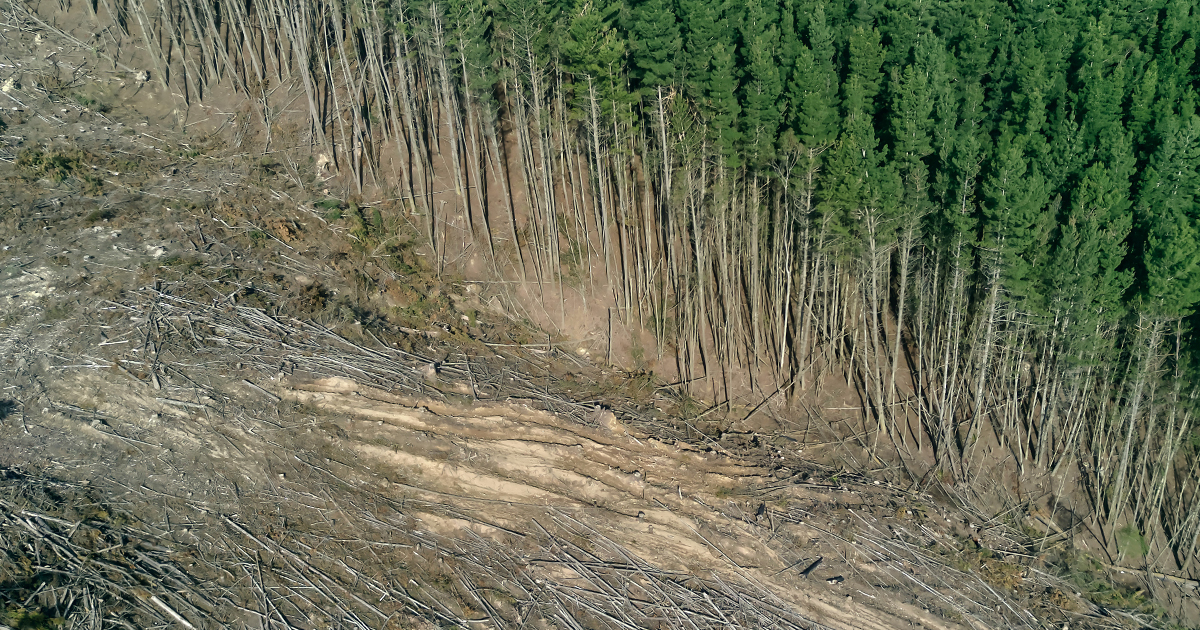We read a lot about fast fashion waste, the pollution it creates, and the social injustices created by the clothes we consume but when we are instagramming our new vegan sneakers or our trendy leather jacket, deforestation is the furthest thing on our mind.
Rainforests are critical for the wellbeing of the planet, they account for 80% of global terrestrial biodiversity, clean the air we breathe, absorb CO2 emissions and release oxygen, therefore, their preservation is vital. The connection between fashion and the lungs of the earth is not always a clear one because of lack of transparency in supply chains but understanding what our clothes are made of gives us the power to make more sustainable fashion choices.How is fashion connected to our forests?
The destruction of our tropical forests continues at an alarming rate. Global Forest Watch estimates that by 2030 an additional 115 million hectares of rainforest will be cleared for fashion related fibers, threatening indigenous communities, animals, and the ecosystem as a whole. The threats that hide in plain sight are leather followed by viscose, rubber/ latex and our sustainably certified ‘Better Cotton’ (coming mostly from Brazilian rainforests).

Viscose
Viscose is made from wood pulp using toxic chemical and water intensive processes. Endangered hardwoods are often illegally cut or cleared to make way for Eucalyptus monocrops used for viscose fibers. 48% of fast fashion’s supply chains are linked to this deforestation resulting in 90 to 150 million trees (forests the size of Germany) cut annually to produce these textile fibers.
This extensive deforestation in the tropical rainforests of Brazil, Indonesia and Canada is happening to cope with the ever-growing demand for viscose/rayon often greenwashed in fashion circles as being sustainable and biodegradable. The overall rainforests and their flora and fauna are at risk of extinction.
Leather
The cattle industry is the single largest driver of deforestation in the tropical rainforests of Brazil, with leather as its co-product. A new report by Stand.earth links more than 100 fashion brands to deforestation, including the likes of LVMH, Prada and H&M, so the chance that your favourite handbag is connected to deforestation is high. The cattle rearing (for leather) contributes to 80 per cent of deforestation in the Amazon.
Cotton
Cotton is a water and agro chemical intensive crop and is typically planted as the second crop after soybeans have been harvested. The massive demand for cotton and more recently BETTER COTTON is becoming unsurmountable and to keep up with this demand virgin forest is being cut or burned to plant cotton. Cotton growing subsidies in the US and China drive the cotton price down, forcing growers in developing countries to clear land for more crops to compete.
Rubber
We cannot escape wearing rubber, it is found in most of our clothing from handbags and shoes to raincoats and rain boots, the soles of sneakers, our stretch denim, fetish wear, as well as the elastic in underwear, socks, and other items.
Latex is the sticky, milky substance drawn off the rubber tree by tapping. The latex then is refined into rubber for commercial processing. The high demand for rubber motivates forest clearing and illegal land grabbing in indigenous rainforests of South America, Thailand, Indonesia, Malaysia, Vietnam and India. Rubber monocropping is also affecting African forests. The demand for rubber production started speeding up in the 2000s and is threatening biodiversity in some of the world’s most species-rich habitations.Making more conscious choices
If you spot the words, viscose, modal, rayon, elastin, BETTER COTTON or Brazilian leather on your clothes’ tags, trees are in your clothes.
Download the app https://goodonyou.eco/, which rates clothing brands on the sustainable practices and gives informative articles on what the brands are doing to improve their actions.Article by Tonya Lehtinen, Vogue Xchange
Sources:
Kimani N., 2016, Speaking for Forests: you’ve got trees in your clothes., https://tdsblog.com/speaking-for-forests/, [Accessed 21 February 2022]Stand.earth, 2021, Nowhere To Hide: How The Fashion Industry Is Linked To Amazon Rainforest Destruction, https://www.stand.earth/publication/forest-conservation/amazon-forest-protection/amazon-leather-supply-chain#slidedeck, [Accessed 21 February 2022]
Hill M, 2019, Fashion’s Footprint In Our Forests, https://goodonyou.eco/fashions-footprint-forests/, [Accessed 21 February 2022]
Kleiderly Converting Clothing, https://www.kleiderly.com/our-blog/fabric-series-all-about-viscose, [Accessed 21 February 2022]
Thomson E. et al, 2020, Through the Looking Glass: The Hidden Deforestation in the Fashion Industry, https://www.anthesisgroup.com/through-the-looking-glass-the-hidden-deforestation-in-the-fashion-industry/, [Accessed 21 February 2022]
Stella McCartney, Fibres from forests, https://www.stellamccartney.com/us/en/sustainability/fibres-from-forests.html, [Accessed 21 February 2022]
CERNANSKY N., 2020, How fashion is distancing itself from deforestation, https://www.voguebusiness.com/sustainability/how-fashion-is-distancing-itself-from-deforestation, [Accessed 21 February 2022]
Tennery-Spalding C., 2014, Introducing: Out Of Fashion, Introducing: Out of Fashion - The Understory - Rainforest Action Network (ran.org), [Accessed 21 February 2022]
SIGN UP FOR OUR NEWSLETTER
The information contained herein is for general information purposes only. APS Bank plc will not be held responsible or liable in any manner for any of the information contained herein. While APS Bank plc has made every attempt to ensure that the information contained herein has been obtained from reliable sources, APS Bank plc will not be held responsible for any errors, omissions or inaccuracy, or for the results obtained from the use of this information. The primary purpose of these articles is to educate and inform. These articles do not constitute legal, medical or professional advice or service.

